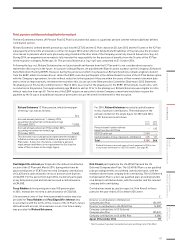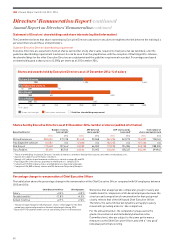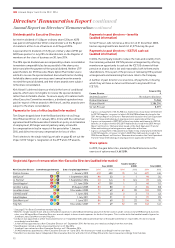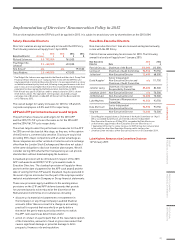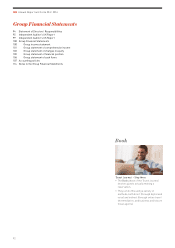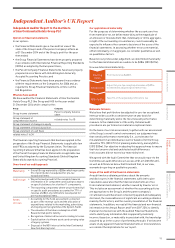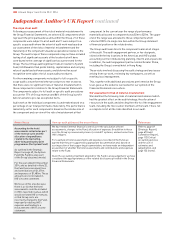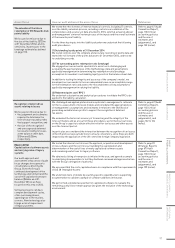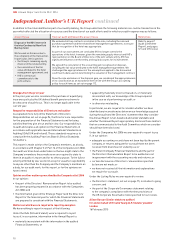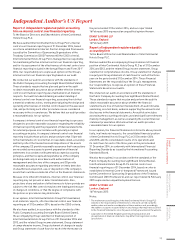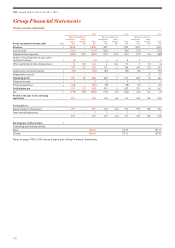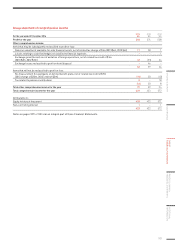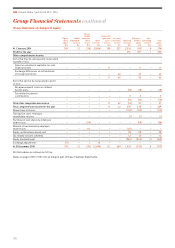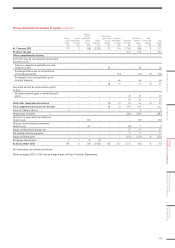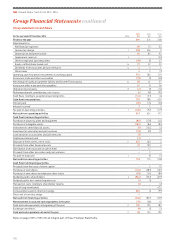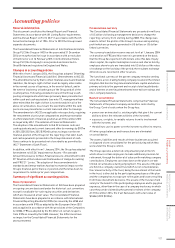Holiday Inn 2014 Annual Report Download - page 99
Download and view the complete annual report
Please find page 99 of the 2014 Holiday Inn annual report below. You can navigate through the pages in the report by either clicking on the pages listed below, or by using the keyword search tool below to find specific information within the annual report.
Area of focus How our audit addressed the area of focus References
The valuation of the future
redemption of IHG Rewards Club
points liability
We focused on this area due to
the size of the liability, ($725m
at 31 December 2014), and its
sensitivity, in particular, to the
breakage estimate (as defined
on page 113).
We tested the effectiveness of internal financial controls, including IT controls,
over the liability valuation process, including controls over validation of the
completeness and accuracy of data provided to IHG’s external actuarial adviser
and management’s internal review process of the inputs and the overall estimate
of the rewards point liability.
For the three key inputs into the liability valuation we undertook the following
audit procedures:
(1) Outstanding loyalty points at 31 December 2014
We tested controls over the complete and accurate recording of points data and
tested the roll forward of the points balance to 31 December 2014, and traced
to underlying records.
(2) The outstanding points redemption ratio (breakage)
We engaged our own actuarial specialists to assist us in challenging and
evaluating the appropriateness of the methodology, data and assumptions
applied by management in determining key redemption ratio/breakage
assumption for member’s outstanding loyalty points at the balance sheet date.
In addition to testing the integrity and accuracy of the company’s model, we
developed our own model to form an independent view on an acceptable range
for the redemption ratio and assess the reasonableness of key assumptions
applied by management in valuing the liability.
(3) Redeemed point cost (‘RPC’)
We undertook substantive and analytical procedures to validate the RPC to be
applied to the liability calculation.
Refer to page 67 (Audit
Committee Report),
page 113 (Critical
accounting policies
and the use of
estimates and
judgements), and
page 152 (notes).
Recognition of deferred tax
assets relating to losses
We focused on this area due to:
• the judgement and estimates
required to determine the
level of future taxable profits
that support recognition; and
• the size of the recognised
and unrecognised deferred
tax assets relating to losses
at the balance sheet date,
$154m and $256m,
respectively.
We challenged and applied professional scepticism to management’s rationale
for the re-assessment of forecast models and considered the appropriateness
of management’s assumptions and estimates in relation to the likelihood of
generating suitable future profits to support the recognition of deferred
tax assets.
We evaluated the historical accuracy of forecasting and the integrity of the
forecast models and as a result of these procedures, we formed our own view
on the Group’s capacity to obtain effective relief for tax losses and other assets
over the forecast period.
In particular, we considered the interaction between the recognition of tax losses
in the UK and overseas jurisdictions to ensure consistency, since these are both
impacted by the application of the UK controlled foreign company legislation.
Refer to page 67 (Audit
Committee Report),
page 113 (Critical
accounting policies
and the use of
estimates and
judgements), and
pages 122 to 124
(notes).
(New in 2014)
Capitalisation of software assets
and carrying value of legacy
systems
Our audit approach and
assessment of key areas of audit
focus changes in response to
circumstances affecting the
Group. Given the Group’s
continued development of the
technology environment and the
size of the capitalised software
balance ($264m as at 31
December 2014), we have
focused on this area in 2014.
Software projects can have
complex development cycles,
often over many phases,
spanning two to three years,
or more. New technology also
brings a risk of impairment
of legacy systems.
We tested the internal controls over the approval, acquisition and development
of new software and the controls surrounding the capitalisation and
determination of the useful lives of newly capitalised software assets
and remaining useful lives for legacy software.
We obtained a listing of new projects initiated in the year, and agreed a sample
to underlying documentation to test they had been reviewed and approved in line
with the Group’s delegation of authority.
We assessed that the costs capitalised were in compliance with the requirements
of IAS 38 ‘Intangible Assets’.
We undertook tests of details by vouching specific expenditures to supporting
documentation to validate a sample of software additions in the year.
We performed a detailed assessment of capitalised software to evaluate the
remaining useful lives remain appropriate given the evolution of the technology
environment.
Refer to page 22
(Strategic Report),
page 67 (Audit
Committee Report),
page 113 (Critical
accounting policies
and the use of
estimates and
judgements), and
page 129 (notes).
STRATEGIC REPORT GOVERNANCE
GROUP
FINANCIAL STATEMENTS
PARENT COMPANY
FINANCIAL STATEMENTS
ADDITIONAL
INFORMATION
97


